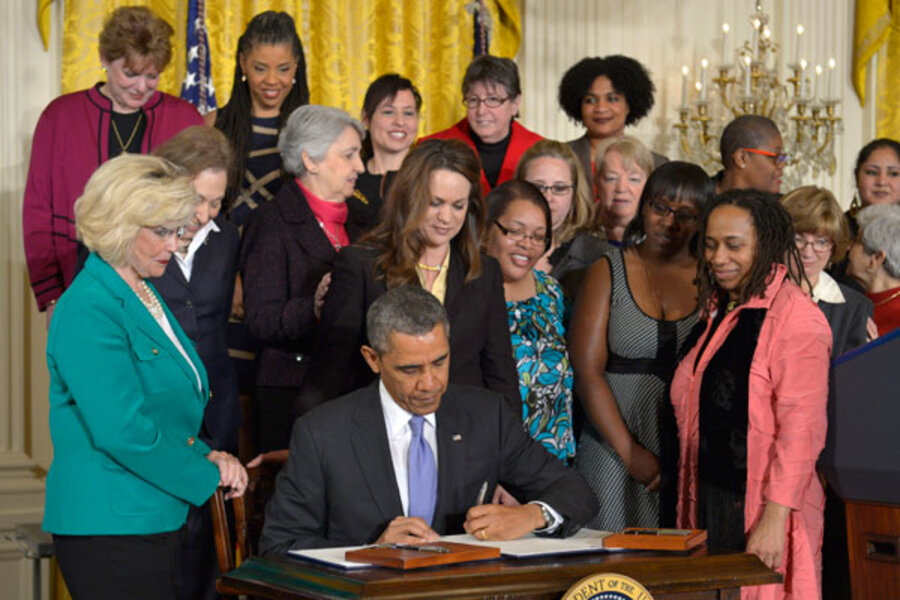Are 2014 midterms really a referendum on President Obama?
Loading...
| Washington
There’s no doubt that the Obama brand is a bit dinged up ahead of the 2014 midterms. Democrats running in red states aren’t exactly begging President Obama to come stump for them. Many are openly disdaining his policies, and the last thing they want is a visual reminder of the man associated with an unpopular health care reform and sluggish economy.
But are the Nov. 4 elections really a referendum on Mr. Obama? The latest Pew Research Center/USA Today poll suggests not. More than half of registered voters – 54 percent – say that Obama will not be a factor in their vote this fall. Still, 26 percent do see their vote as a vote against him, while only 16 percent see it as a vote for the president.
In February 2010 – as the “wave” was forming that would toss Democrats out of power in the House later that year – 24 percent of voters said their vote was for Obama and 20 percent said they were voting against him.
Democratic pollster Geoff Garin notes that in October 2010 the percentage of voters who said Obama would not be a factor was 12 percentage points lower than it is now.
“When voters think about politics and what's wrong with Washington today, Obama is not the first thing that comes to mind – it's the frustration with Congress, gridlock, and ultra-partisanship,” Mr. Garin says.
But Obama may well be part of that calculation – both for voters who want more opposition to his policies on Capitol Hill and for voters who want more support. A majority (53 percent) told Pew that control of Congress would be a factor in their vote. More Republicans (59 percent) feel that way than Democrats (52 percent).
Republicans also beat Democrats in the “generic ballot” by four points, 47 percent to 43 percent, the biggest such advantage for Republicans in at least two decades, USA Today reported. That bodes well for Republicans’ hopes of adding to their majority in the House and winning the six seats need to take control of the Senate.
The Pew poll contained a few slim reeds of hope for the Democrats.
“While Democrats face a number of possible disadvantages in the fall, their party’s congressional leaders continue to be viewed less negatively than GOP leaders,” Pew reported. “Just 23 percent of the public approves of the way Republican leaders in Congress are handling their jobs while nearly three times as many (68 percent) disapprove. Job ratings for Democratic leaders, while hardly robust, are not as bad: 32 percent approve of their job performance while 60 percent disapprove.”
And in the end, Americans don’t vote on a generic ballot, they vote for or against specific candidates. The real issue for Democrats is whether they can motivate their voters to show up at the polls. Party leaders say they will use the same turnout techniques that worked for Obama in 2012 to get their voters to the polls in 2014. But they face a daunting task.
Some of the Democrats’ most reliable supporters in presidential years – single women, minorities, and young voters – vote in much lower numbers when the midterms roll around. A recent Wall Street Journal/NBC News poll showed some stark data about the so-called “dropoff voters”: 61 percent are female and 35 percent are between the ages of 18 and 34. In partisan terms, 51 percent of “dropoffs” are Democrats, 17 percent are independents, and 25 percent are Republicans.
The name of the game, therefore, is GOTV – “get out the vote.” That means recruiting volunteers and raising enough money to pay for the staff and infrastructure needed to get dropoff voters to turn out.
“This is why it’s not intensity scores on polls but rather the bustle of field offices and the sums on fund-raising reports that are the best guide to the Democrats’ midterm prospects,” writes Sasha Issenberg in The New Republic.






